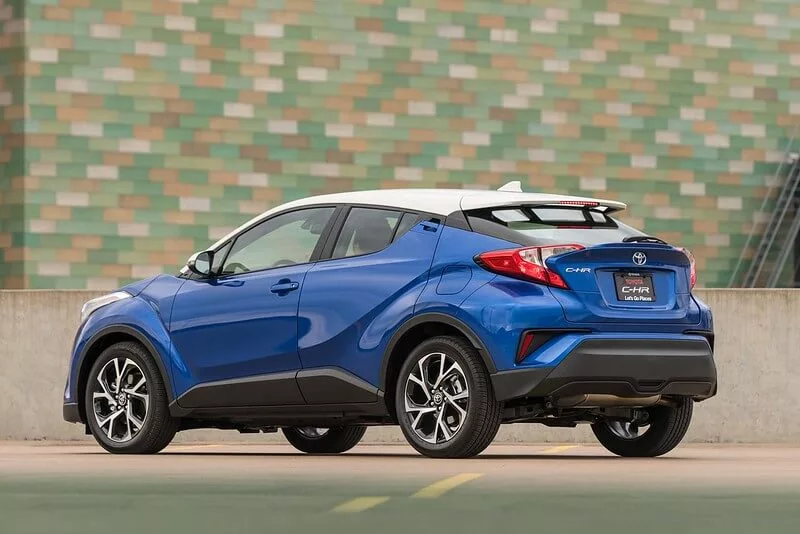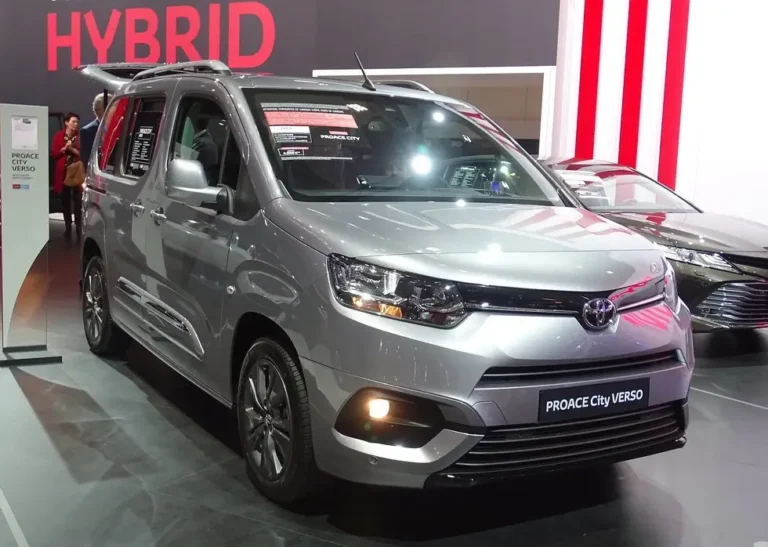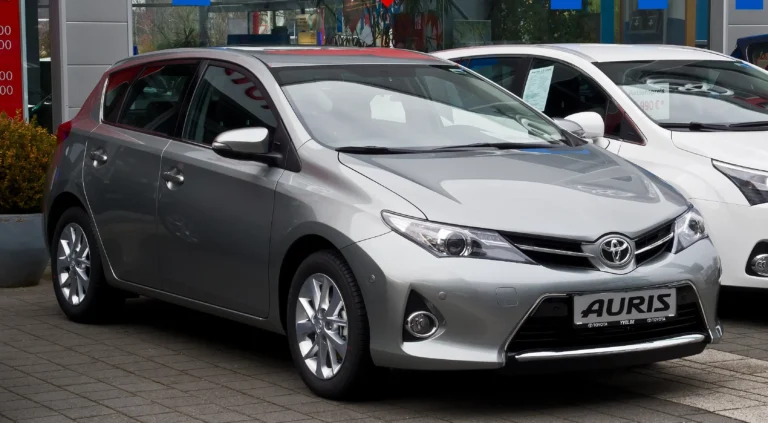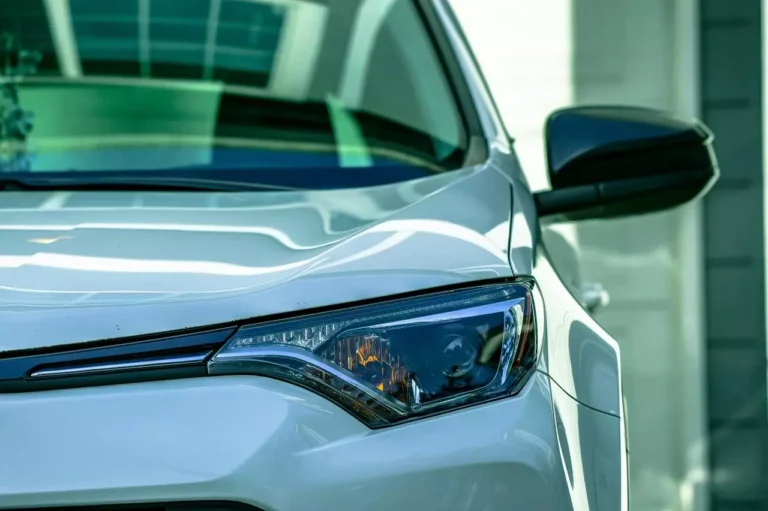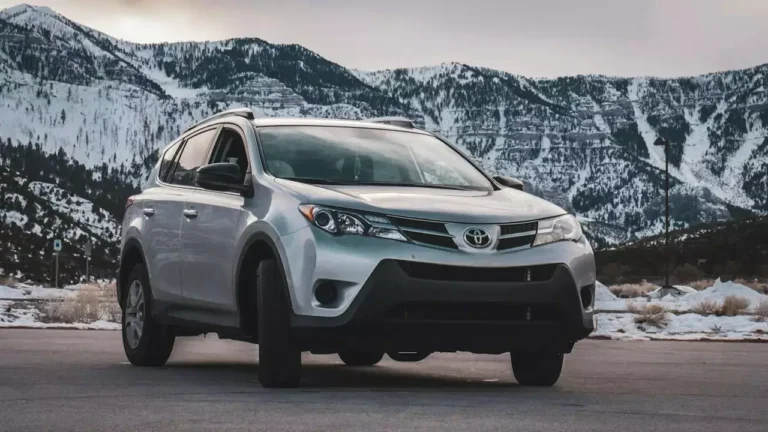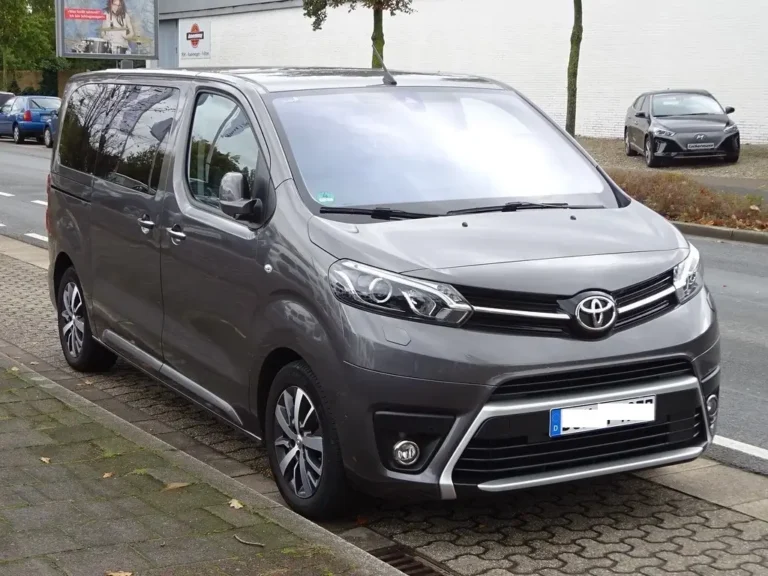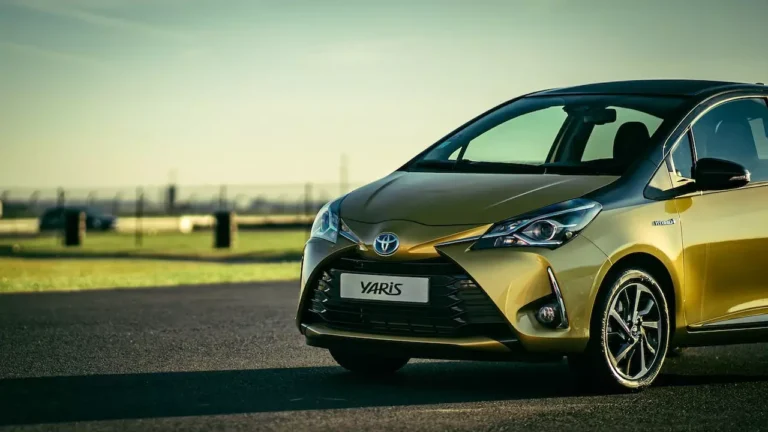5 Häufige Probleme beim Toyota C-HR Hybrid und Schritte zur Fehlerbehebung
The Toyota C-HR Hybrid is an innovative hybrid vehicle that offers impressive efficiency and environmental friendliness through its combination of gasoline and electric power. Since its launch, the C-HR Hybrid has established itself as a popular model on the market thanks to its modern technology and stylish designs.
Growing popularity of hybrid vehicles
In recent years, the demand for hybrid vehicles has increased worldwide. Drivers value the combination of eco-friendly driving and fuel efficiency, making hybrid cars like the Toyota C-HR Hybrid attractive options.
Importance of timely resolution of common problems
Despite their advantages, hybrid vehicles like the C-HR can also face certain challenges. This post identifies five common Toyota C-HR Hybrid problems and provides effective solutions to ensure drivers can address these issues in a timely manner.
5 Häufige Toyota CHR Hybrid Probleme
Problem 1: Inefficient fuel economy
Explanation of potential causes
Fuel economy is a crucial factor for owners of hybrid vehicles like the Toyota C-HR. If the vehicle unexpectedly experiences higher fuel consumption, several factors may be responsible:
- Adjust driving behavior: Aggressive acceleration and abrupt braking can reduce efficiency.
- Tire inspection: Under- or over-inflated tires can increase rolling resistance and therefore affect fuel consumption.
- Engine Maintenance: A poorly maintained internal combustion engine can operate inefficiently and increase fuel consumption.
Solution steps
1. Tips for optimizing fuel efficiency
- Adjust driving behavior:
- Avoid sudden acceleration and braking.
- Use the electric drive power in appropriate situations.
- Regular maintenance:
- Carry out regular inspections according to the maintenance schedule.
- Change air filters and spark plugs on time.
2. Diagnostic checks to identify underlying problems
- Use OBD-II scanner:
- Connect an OBD-II scanner to read error codes from the on-board computer.
- Check specific codes that may indicate fuel system problems.
- Check fuel system:
- Inspect fuel lines for leaks.
- Measuring fuel pressure to ensure it is within specifications.
These steps will help not only optimize current fuel consumption, but also identify possible underlying problems and correct them in a timely manner.
Problem 2: Malfunctions in the hybrid system
Understanding the components of the hybrid system
Hybrid vehicles like the Toyota C-HR are characterized by complex hybrid systems. Understanding the main components is crucial to identifying potential malfunctions:
- Electric motor:
- Main component for the electric drive.
- Converts electrical energy into movement.
- Internal combustion engine:
- Provides additional power when needed.
- Charges the hybrid battery.
- Hybrid battery:
- Stores electrical energy.
- Supplies the electric motor and supports the combustion engine.
- Power electronics:
- Controls the flow of energy between the electric motor and combustion engine.
Common signs of hybrid system problems
There are certain symptoms that may indicate possible malfunctions in the hybrid system:
- Warning signs:
- Display warning lights on the dashboard, particularly those relating to the hybrid system.
- Power loss:
- Reduced vehicle performance in hybrid mode.
- Increased fuel consumption:
- An inefficient hybrid system can lead to increased fuel consumption.
Solution steps
1. Review alerts in the hybrid system
- Reading the on-board computer:
- Use a scan tool to identify specific trouble codes in the hybrid system.
- Note any warning lights that come on and what they mean.
- Interpretation of error codes:
- Research specific error codes or contact the manufacturer for more information.
- Some codes may indicate specific components or system areas.
2. Consultation with a certified technician
- Expert assessment by a hybrid expert:
- Find a certified Toyota technician or hybrid vehicle expert.
- Share any trouble codes and symptoms identified to facilitate a thorough diagnosis.
These steps will help determine the causes of hybrid system problems and allow a professional to make an accurate diagnosis and make necessary repairs.
Issue 3: Battery performance issues
Overview of the hybrid battery
The hybrid battery is the heart of every hybrid vehicle, including the Toyota C-HR. Here is a basic overview of their features and components:
- Battery type:
- The Toyota C-HR uses a high-voltage nickel-metal hydride (NiMH) battery.
- This battery stores electrical energy for the electric motor.
- Lifespan:
- The lifespan of a hybrid battery varies, but it can often last tens of thousands of kilometers.
- The battery’s performance decreases over time.
Signs of a deteriorating hybrid battery
To identify performance-related issues early, drivers should look out for the following signs:
- Loss of electrical power:
- The electric motor may no longer receive enough energy, resulting in a loss of electric driving capability.
- Increased fuel consumption:
- A failing hybrid battery forces the vehicle to rely more on the combustion engine, which can lead to higher fuel consumption.
- Warning signs:
- Specific warning lights that indicate insufficient battery power.
Solution steps
1. Battery health check
- Use of diagnostic tools:
- Use special diagnostic equipment to check the current condition of the hybrid battery.
- Analyze parameters such as voltage, capacity and charging cycles.
- Loading capacity assessment:
- A specialized technician can check the battery’s charge capacity to determine whether it can still store enough energy.
2. Consider battery replacement options
- Advice from the manufacturer:
- Consult the manufacturer or an authorized dealer for a professional assessment.
- Get battery maintenance or replacement recommendations.
- Get expert recommendations:
- If the battery no longer works efficiently, replacement may be considered.
- Inquire about options such as genuine parts or batteries of equivalent quality.
These steps help maintain battery performance and allow timely measures to be taken to maintain the efficiency of the hybrid vehicle.
Problem 4: Transmission problems
Common transmission problems in Toyota C-HR Hybrid
The transmission is a central component for the smooth functioning of a vehicle. In the case of the Toyota C-HR Hybrid, various gearbox problems can occur:
- Jerking or shaking:
- Rough driving when accelerating or decelerating can indicate problems with the transmission.
- Delayed gear change:
- If gear changes are delayed or accompanied by unusual noises, there may be transmission problems.
- Gear oil leaks:
- Visible leaks under the vehicle indicate possible sealing problems in the transmission.
Solution steps
1. Regular check of the gearbox oil
- Visual inspection for leaks:
- Periodically inspect the area under the vehicle for signs of transmission fluid leaks.
- Leaks can indicate defective seals or cracks in the gearbox housing.
- Check oil level:
- Check the oil level according to the manufacturer’s instructions.
- Make sure that the gear oil is clean and does not show any unusual discoloration.
2. Seek professional help for complex problems
- Gearbox inspection by qualified mechanics:
- If problems or unusual noises persist, a thorough transmission inspection by an experienced mechanic is required.
- Replacement of defective components:
- A professional technician can identify and replace defective parts in the transmission.
- Replacing worn clutches, seals or bearings can improve transmission performance.
These steps will help you respond to transmission problems early, identify them and, if necessary, resolve them with professional help to optimize vehicle performance.
Problem 5: Brake problems
Explanation of the braking system in hybrid vehicles
The braking system of a hybrid vehicle, such as the Toyota C-HR, combines conventional mechanical brakes with the regenerative braking system of the electric motor. Here is a basic explanation:
- Mechanical brakes:
- As with conventional vehicles, there are disc brakes on the front wheels and often drum brakes on the rear wheels.
- These brakes are activated when the driver presses the brake pedal.
- Regenerative braking system:
- The electric motor also acts as a generator and produces electrical energy when decelerating.
- This energy is fed back into the hybrid battery.
Signs of brake-related problems
To identify possible brake problems early, drivers should pay attention to the following signs:
- Noises when braking:
- Squeaking, grinding, or other unusual noises may indicate brake problems.
- Feeling of vibration when braking:
- Vibrations in the steering wheel or brake pedal may indicate an irregularity in the braking system.
- Delays when braking:
- A noticeable loss of power or delays in braking could indicate worn brake pads or other problems.
Solution steps
1. Brake system inspection
- Checking brake pads and discs:
- Visually inspect the brake pads for wear or irregularities.
- Check the brake discs for cracks or discoloration.
- Checking the brake fluid:
- Checking the brake fluid level and consistency.
- Change the brake fluid according to the manufacturer’s specifications.
2. Fix common brake problems
- Replacing worn brake components:
- Replace worn brake pads and brake discs in a timely manner.
- Look for signs of wear on the brake cylinders.
- Bleeding the brake system:
- Bleed the brake system to remove air bubbles and improve braking performance.
- This should be done by a qualified technician.
These steps allow for regular maintenance and timely identification of braking problems to ensure the safety and efficiency of the braking system.
Preventive maintenance tips
Importance of regular maintenance
Regular maintenance of a hybrid vehicle like the Toyota C-HR is crucial to ensure the performance, reliability and lifespan of the vehicle. Here are some reasons why regular maintenance is so important:
- Increased efficiency:
- Regular checks and maintenance ensure that all systems are functioning optimally, resulting in improved fuel efficiency.
- Avoiding major problems:
- Small problems that go unnoticed can turn into costly repairs. Regular maintenance allows problems to be identified and resolved early.
- Maintaining resale value:
- Well-maintained vehicles retain a higher resale value. Potential buyers prefer vehicles with proven regular maintenance.
Regular checks and inspections
To effectively implement regular maintenance, drivers should perform the following checks and inspections:
- Oil change:
- Change the engine oil according to the manufacturer’s instructions. Fresh oil protects the engine and improves performance.
- Brake check:
- Inspect brake pads, discs and fluid regularly. Brake problems should be addressed immediately.
- Tire maintenance:
- Check tire pressure regularly to ensure even wear and optimize fuel consumption.
- Battery check:
- Check the charge level of the hybrid battery and replace it if necessary.
Recommended maintenance intervals
To ensure that all vehicle components are in optimal condition, the following maintenance intervals should be observed:
- Oil change:
- Typically every 5,000 to 7,500 kilometers or according to the manufacturer’s specifications.
- Brake inspection:
- Every year or every 20,000 kilometers. If there are signs of problems, act immediately.
- Tire rotation:
- Every 8,000 to 10,000 kilometers to ensure even wear.
- Battery check:
- Annually or every 30,000 kilometers. Replace the battery when performance deteriorates.
Following these maintenance tips will help extend the life of your Toyota C-HR Hybrid and ensure the vehicle remains in optimal shape.
BMW 218d Gran Tourer Probleme und Schritt-für-Schritt Fehlerbehebung
Conclusion
Regular maintenance of the Toyota C-HR Hybrid is essential to ensure the long-term performance and reliability of this innovative vehicle. By understanding and timely fixing common problems, from fuel efficiency to brakes, drivers can not only improve their driving experience but also avoid potentially costly repairs.
Maintenance intervals and inspections should not be viewed as a chore, but as a proactive measure to maintain the health of the vehicle. The importance of regular checks and early identification of problems cannot be overemphasized. This not only contributes to safety on the road, but also to maintaining the value of the vehicle over the years.
Given the complexity of the hybrid drive and the large number of components, a partnership with certified technicians and regular visits to authorized workshops are crucial. This is the only way drivers can ensure that their Toyota C-HR Hybrid is always in the best possible condition and takes full advantage of the benefits of this modern technology.
Remember that preventive measures can not only save costs, but also reduce environmental impact by ensuring that your hybrid vehicle operates efficiently and sustainably. Therefore, we encourage all Toyota C-HR Hybrid owners to follow the suggested maintenance tips to enjoy a long-term, hassle-free driving experience.
